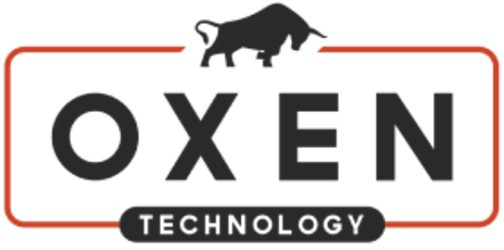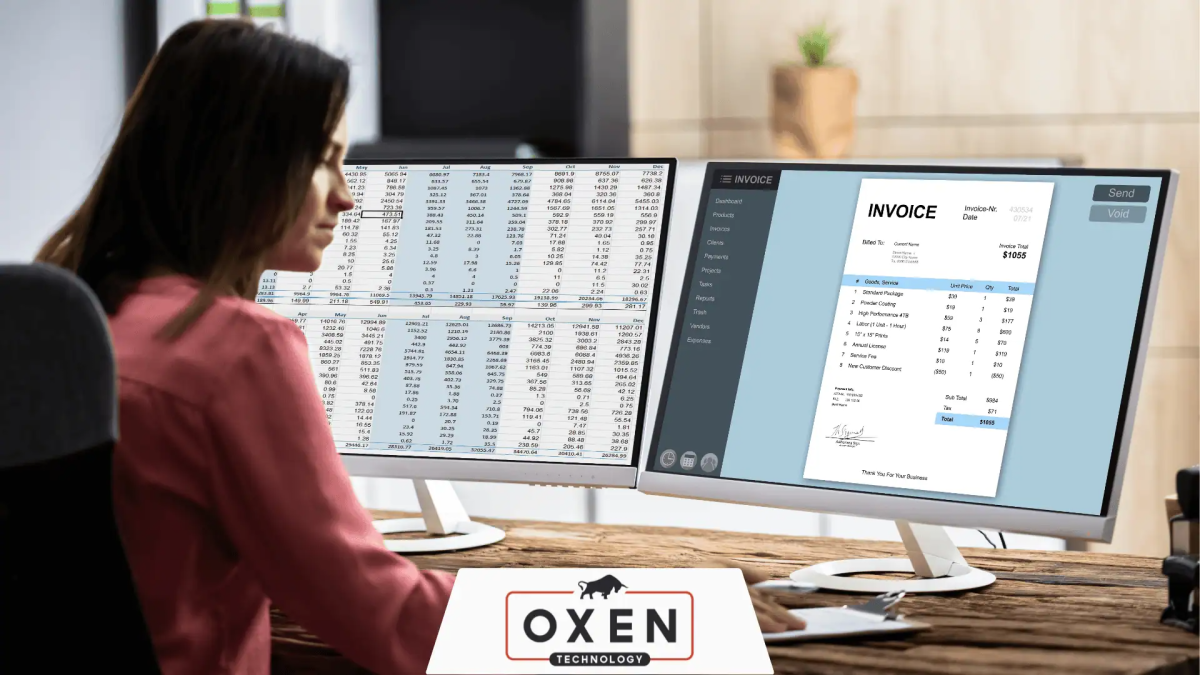Understanding IT Procurement Best Practices with an IT Support Provider in Wichita
Wichita, United States - August 28, 2025 / OXEN Technology /
Wichita IT Support Provider Explains IT Procurement Best Practices
Buying the wrong technology drains budgets, slows down teams, and causes problems that are expensive to fix. Many businesses don’t realize their IT procurement process is broken until it creates major delays or disrupts operations.
According to CloudSecureTech, Businesses lose over $1.8 trillion each year to poor procurement choices and inefficient buying processes. These losses are preventable with the right systems in place.
Ryan Pieken, Senior Consultant CIO, CISO Services, OXEN Technology, says, “Companies that fix their procurement process see faster onboarding, stronger compliance, and lower costs within the first year.”
Today, one of the leading tech support providers in Wichita shares IT procurement best practices you can apply right away. You’ll learn what smart companies do to cut waste, make faster buying decisions, and get better long-term results from their IT investments.
8 IT Procurement Best Practices That Cut Waste and Improve Results
Many companies follow outdated buying methods that lead to delays, overspending, and the purchase of the wrong tools. These IT procurement best practices fix those issues by giving every purchase more structure, better planning, and stronger results.
Each one helps your team buy smarter, avoid setbacks, and get real value from every IT investment. Procurement decisions account for up to 40-70% of company costs, so even small process improvements have a significant impact on the bottom line.
1. Stop the Guesswork With a Requirements-First Approach
Buying technology without a clear reason often leads to waste. If a tool doesn’t match a real business need, it ends up sitting unused or causing extra work.
79% of companies say purchasing new technology is difficult, and unclear requirements are a major reason why.
Many companies skip the planning step and pay the price later.
This leads to:
Tools that don’t work well with current systems
Employees using unapproved tools to fill gaps
Extra work to fix or replace bad purchases
To avoid this, start every IT purchase with clear planning.
That means:
Talking to team leads to find out what tools they already use and where the problems are
Writing down exactly what the new tool should fix or improve
Making sure each tool you consider supports a real business goal like faster customer service, better reporting, or more reliable systems
This step is a key part of best practices in IT procurement. It keeps your buying process focused on results, not just features.
2. Connect IT and Finance Before the RFP Goes Out
IT and finance teams often have different goals. IT wants tools that work well and support the business. Finance wants to control costs and avoid waste.
If these teams don’t talk early, you risk choosing tools that cost too much or don’t do enough.
To avoid that, ensure IT and finance work together from the start. Before sending out a Request for Proposal (RFP), agree on what’s important to both sides.
Work together to decide on:
Total cost over time, including support and upgrades
How the tool will scale as your company grows
The vendor’s track record, including how they support customers
How the tool fits with your other systems and tools
When IT and finance plan together, you get better tools at better prices. You also avoid late changes, missed goals, and hidden costs. This is one of the most important IT procurement process best practices for companies of all sizes.
3. Evaluate Vendors Beyond Features and Cost
A tool that looks great on paper may not function well in real life. Some vendors check all the boxes during a demo but fall short once the tool is in place.
Don’t just focus on what a tool does or how much it costs. Ask questions that help you understand how the vendor works after the sale.
Before signing anything, ask vendors:
What kind of support is included? Is it free, limited, or extra?
Do they meet compliance needs such as HIPAA or SOC 2?
Can they prove reliability, such as uptime guarantees or audit results?
How easily does their tool connect to the tools you already use?
Also look for:
Online reviews from real users
Case studies or references from companies like yours
Sample contracts or service-level agreements (SLAs)
Vendors that focus on long-term success, not just the sale, will stand out during this step.
4. Automate Your Procurement Workflow or Stay Stuck in Manual Loops
If your procurement process relies on email and spreadsheets, it’s going to slow you down. Manual steps cause delays, confusion, and missed approvals.
When you automate the process, everything moves faster and more smoothly. Even a basic procurement tool can help you:
Use standard request forms so every project starts with the right info
Set up clear approval steps so nothing gets stuck in someone’s inbox
Track everything in one place, with a full history of each request
Get alerts when a task is waiting for someone to take action
Automation is a key part of IT procurement best practices. It reduces mistakes, saves time, and makes it easier to track progress. It’s also easier to train new staff on an automated system than a manual one.
5. Standardize the IT Procurement Lifecycle From Day One
When every team handles procurement differently, confusion arises. One group might skip key steps, while another overcomplicates the process. That leads to delays, missed details, and rushed decisions.
Instead, use a clear, step-by-step process that everyone follows. This gives your team structure and keeps each purchase moving forward.
Use this lifecycle to guide every procurement:
Request intake: Gather all the key details at the start
Evaluation: Compare options using both technical and budget filters
Approval: Send to the right people for sign-off
Ordering: Place the order and confirm details with the vendor
Delivery: Track what’s received and ensure everything works
Performance review: Check results after rollout to see if it met your goals
This helps you avoid rushed purchases, track vendor performance, and repeat what works.
6. Include Integration Planning in the Procurement Process

Many companies wait too long before planning how a new tool will work with their current systems. If you don’t plan for integration early, setup takes longer and may cost more.
Make integration a key part of your early vendor discussions.
Ask vendors questions like:
Which tools do you connect with out of the box?
Can data move easily between your tool and ours?
Do you help with setup and testing, or is that on us?
Also, involve your operations or technical teams. They’ll know what problems to watch for and help you avoid surprises.
A tool that fits well with your current systems will be easier to roll out and use, and your team will see the benefits fast.
7. Track Performance With Real Data, Not Gut Feel
You can’t improve your process if you don’t track what’s working. Many teams purchase a tool and never go back to measure its impact.
Collect real data after each purchase to improve procurement.
Track things like:
How long it took to receive and install the tool
Whether the tool meets uptime and performance goals
How many people use it compared to what you expected
What end-users think, based on support tickets or feedback
Cost per user or team over time
Use a simple dashboard or spreadsheet to track these numbers. Then review what worked and what didn’t. That way, you can avoid repeating mistakes.
8. Simplify Vendor Relationships Wherever Possible
Working with too many vendors adds cost and complexity. You have more contracts to manage, more invoices to track, and more people to call when something breaks.
Where it makes sense, try to work with fewer vendors. You don’t need one vendor for everything, but aim to reduce overlap.
When you simplify your vendor list, you benefit from:
Stronger discounts, since you’re spending more with fewer companies
Simpler contracts and billing
More consistent support
Easier renewals and reviews
You can also use a procurement platform that gives access to pre-approved vendors with built-in discounts. This makes it even easier to manage spend and track value.
Simplifying vendor relationships gives your team more time to focus on what matters, using the right tools, not managing dozens of contracts.
Apply IT Procurement Process Best Practices to Renewals, Too
Many companies treat renewals as a quick checkbox. They assume the original tool still fits without checking how things have changed. This is where value leaks out.
As part of your IT procurement process best practices, treat renewals like new purchases. Start by checking usage data. See if the tool still meets current needs, or if your team has outgrown it.
Then evaluate:
Current performance: Has uptime dropped? Are support tickets rising?
Cost changes: Has the price increased without added value?
New options: Are there better tools now that offer more for less?
Contract flexibility: Can you renegotiate or bundle services?
This step helps you avoid wasting money on tools that no longer serve the business. It also gives you leverage during renewal discussions.
Smart teams apply procurement best practices at every point of the lifecycle, not just when buying something new.
How to Avoid Common IT Pitfalls With Best Practices in IT Procurement
Even with the right goals in place, some teams still run into problems. Use this table to check your current process and avoid common mistakes.
| Mistake | What to Do Instead |
| Buying without checking for integrations | Ask vendors about system fit from the start |
| Choosing based only on features or price | Include support, compliance, and reliability |
| Ignoring user feedback after rollout | Track usage and satisfaction regularly |
| Working with too many vendors | Reduce overlap to simplify contracts |
| Slow approvals due to manual steps | Use automation to speed things up |
Even small changes in these areas can lead to better results.
Partner with the Leading Tech Support Provider in Wichita to Align with IT Procurement Best Practices
Following IT procurement best practices helps your business lower costs, avoid delays, and make smarter choices about technology. When you define goals early, bring teams together, ask the right questions, and track outcomes, your procurement process becomes a business advantage.
As one of the most trusted IT support providers in Wichita, OXEN Technology helps growing businesses strengthen procurement through expert IT consulting and clear, business-aligned strategies.
We bring a business-focused perspective that ties technology decisions directly to company goals. Our team also has deep industry experience across telecom, critical infrastructure, and banking, so your technology plan reflects real-world demands.
Contact us today to start improving your procurement process.

Contact Information:
OXEN Technology
8406 W Maple St
Wichita, KS 67209
United States
Kelle White
(888) 296-3619
https://oxen.tech/
Original Source: https://oxen.tech/blog/it-procurement-best-practices/


